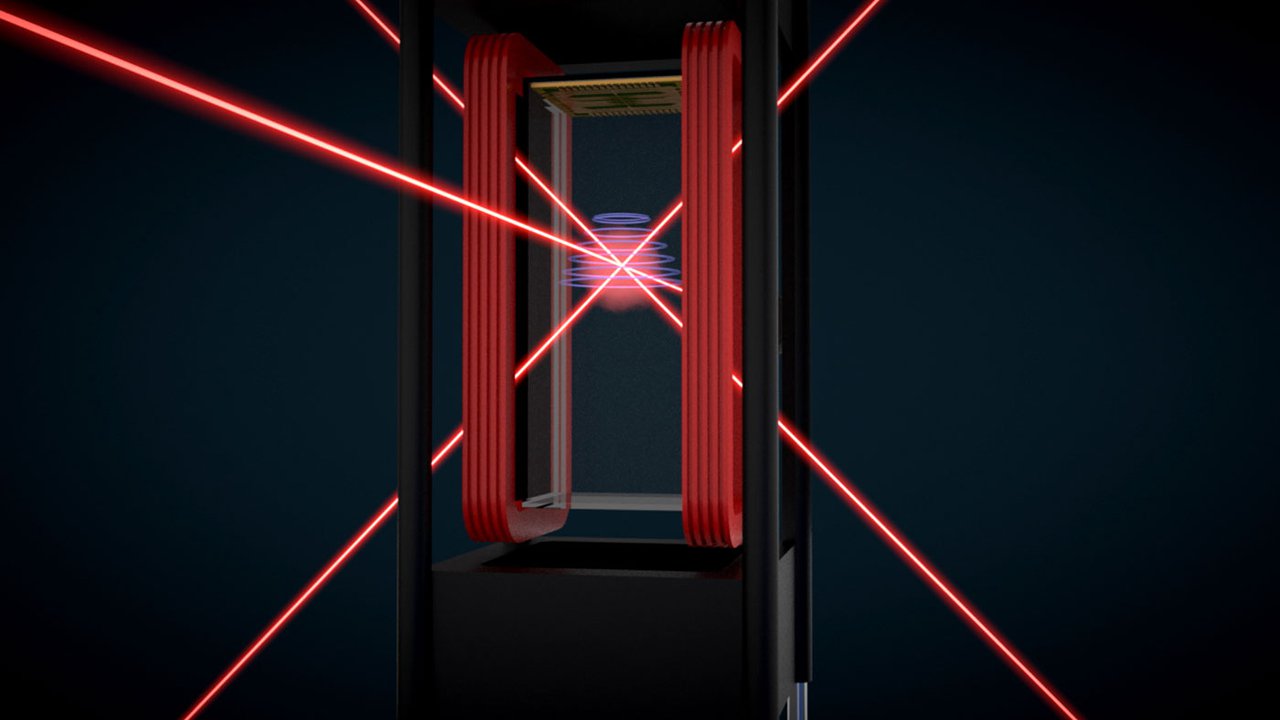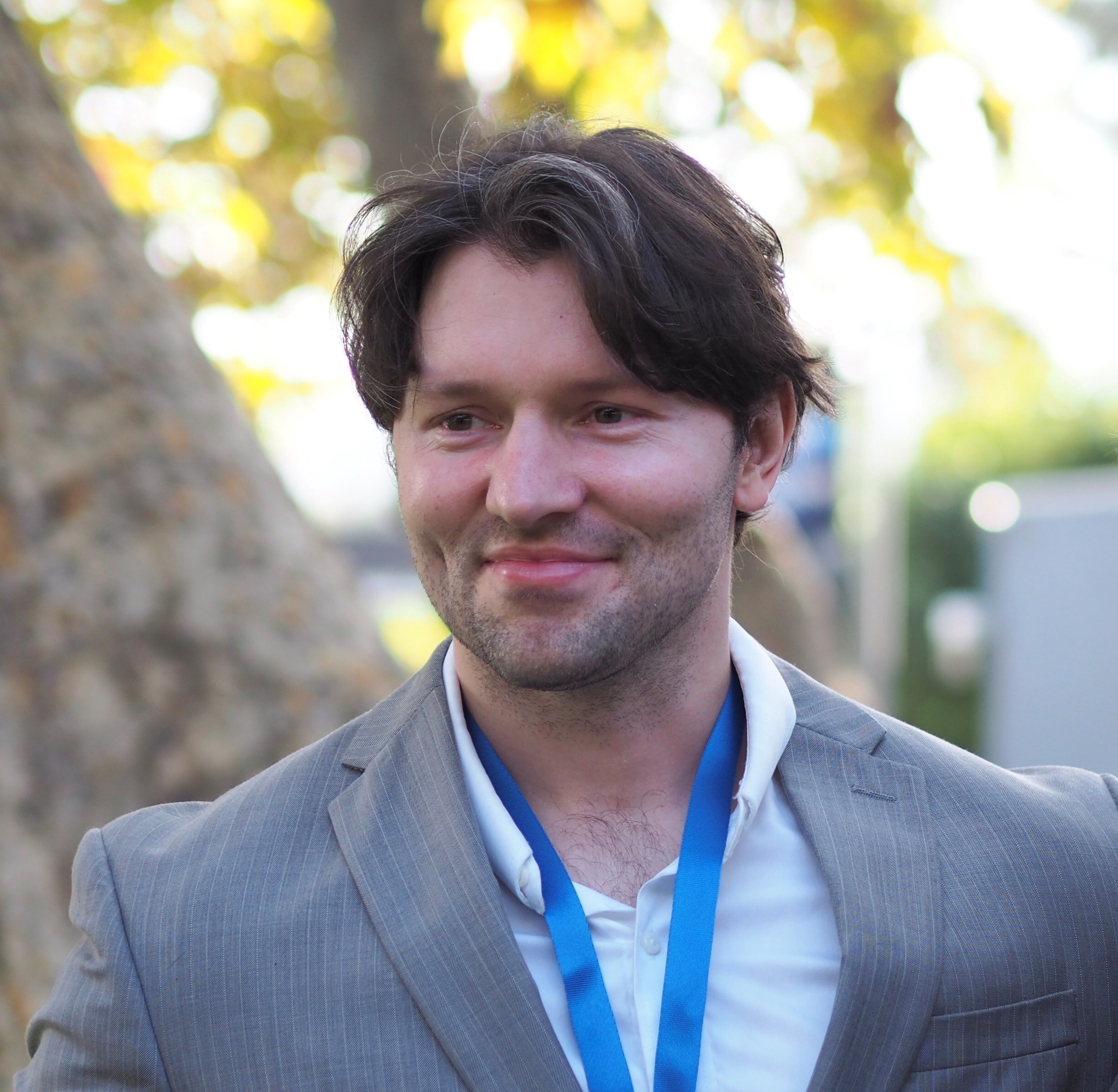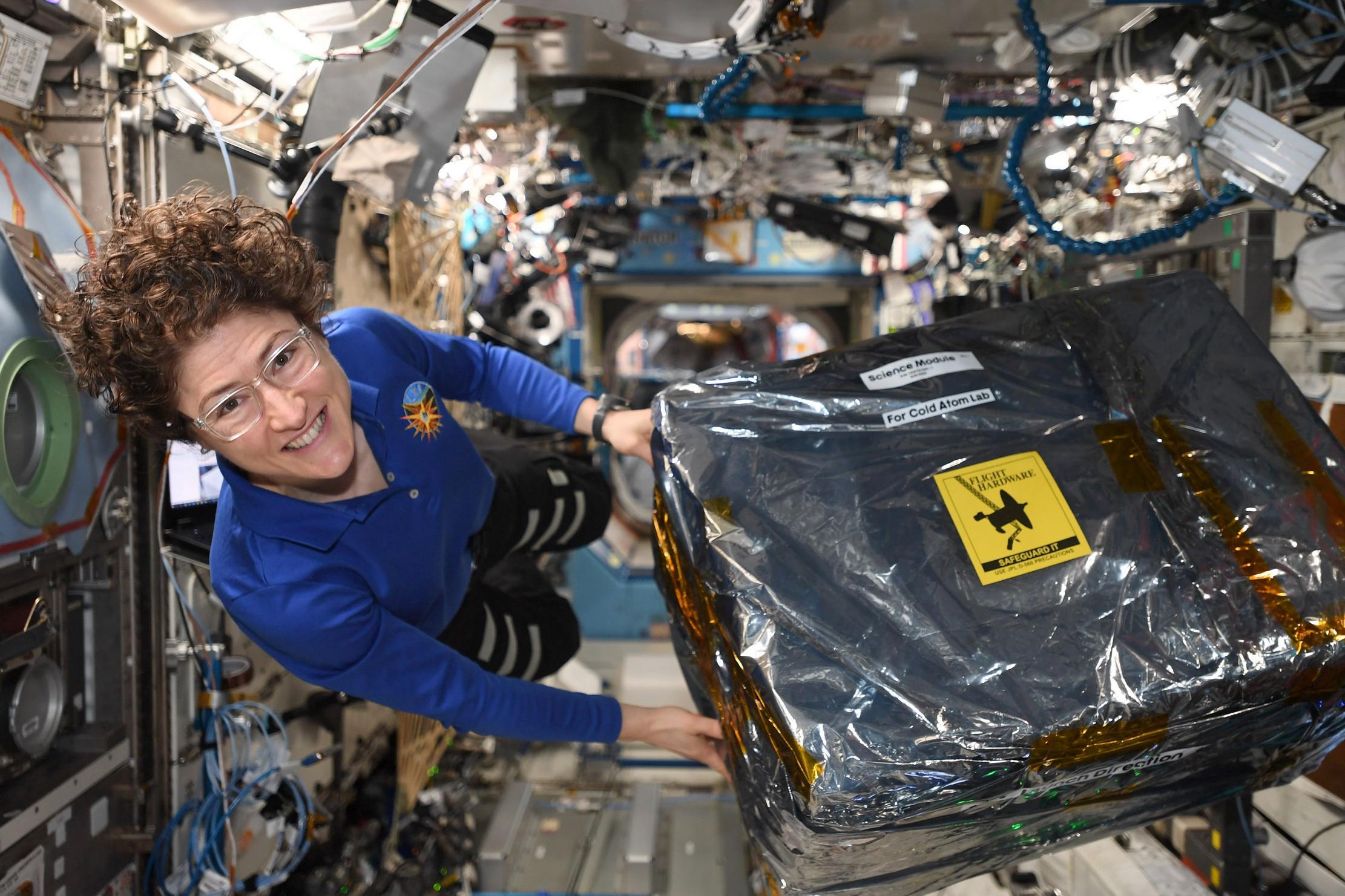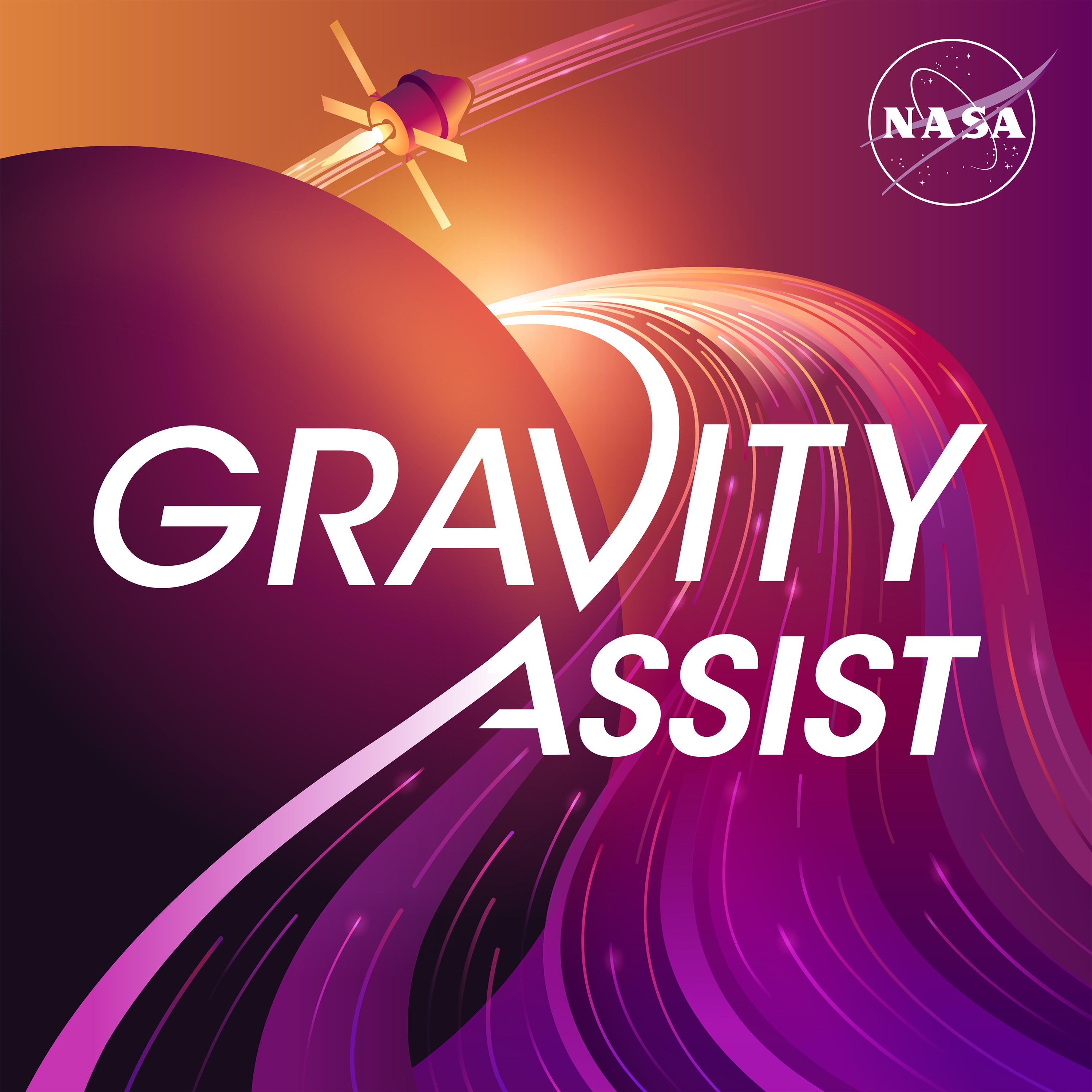
The laws of physics get very, very weird in the realm of particles too small for the eye to see. Aboard the International Space Station, an experiment called the Cold Atom Laboratory (CAL) is exploring how the universe works on a fundamental level by cooling atoms down to a billionth of a degree above the coldest temperature possible, absolute zero. By using special lasers and magnetic fields, CAL is making unusual structures called Bose-Einstein condensates almost every day. Ethan Elliott of NASA’s Jet Propulsion Laboratory talks about the exciting possibilities that this experiment offers for the future of physics.
Jim Green:Space is cold, really cold. What happens to the very tiny world of atoms when they are so far away from any sun?
Ethan Elliott: 10 billion times colder than the core of your body is now on the International Space Station.
Jim Green:Hi, I’m Jim Green. And this is a new season of Gravity Assist. We’re going to explore the inside workings of NASA in making these fabulous missions happen.
Jim Green: I’m here with Ethan Elliott, and he is an atomic physicist and research technologist at NASA’s Jet Propulsion Laboratory in Pasadena, California. He’s been working on Cold Atom Laboratory, a really neat piece of research up on the International Space Station, and it’s operating right now. Welcome, Ethan, to Gravity Assist.
Ethan Elliott: Thank you, Jim. Very excited to be here.
Jim Green:What exactly is the Cold Atom Lab, Ethan, and what’s it trying to do up in space?
Ethan Elliott:So it’s a self-contained lab that includes all the seven lasers, all the electronics, and the ultra-high vacuum chamber needed to cool atoms to under a billionth of a degree above absolute zero. It was installed on the interior of the ISS in June of 2018. So it’s been operating for about three years. It’s created the first Bose-Einstein condensate in orbit, and demonstrated the first atom interferometer in orbit.
Jim Green: So when you talk about the Bose-Einstein condensates, what exactly do you mean?
Ethan Elliott:The Bose-Einstein condensate takes its name from two physicists, you know, we’re pretty familiar with Einstein. And Einstein predicted the condensate, but all of that work was based on the work of the Indian physicist, Bose, who very generally worked out these, these quantum statistics that predicted not just the BEC, but know that this whole range of physics involving photons at the time in 1925, and he sent this paper to Einstein and Einstein realized, oh, wow, there, there’s really something here and officially translated into German himself. And that’s where Einstein’s name get, get attached to it.
Ethan Elliott:It’s, it’s a fifth state of matter beyond solid, liquid, gas, and plasma. But fundamentally, we describe it as a macroscopic quantum object. And I realize that’s the kind of answer that gives scientists a bad name because it raises 10 more questions. Right, so what is a macroscopic quantum object?

Ethan Elliott:So a quantum object follows the laws of quantum mechanics, which were rules scientists discovered, when they started studying the smallest objects in the universe like electrons. They found they could behave like waves and particles. And that’s very strange, because we know waves and particles are different things. When particles collide, they bounce off of each other. But when waves collide, they can move through each other, or waves can be at different places at once.
Ethan Elliott:And by trapping and cooling atoms, we can exploit a law that quantum mechanics applies not just to the smallest, but also to the coldest. Advances in technology and techniques over the last 40 years, have allowed us to reach these temperatures where we can actually amplify quantum mechanics. So in science fiction terms, we can’t shrink something down and enter the quantum realm. But we can enlarge the quantum realm itself. And the experimental machines that do this work better in microgravity, and that’s where the ISS comes in.
Ethan Elliott:Another way to think about cold atoms in space is that the cold gives you the amplification of quantum mechanics, while the freefall of the ISS gives you an extension of the amount of time you have to interact with gravity. So that’s like a kind of an amplification of gravity.
Jim Green:So when we say cold, how cold is it? And how do you work so hard to make it at that temperature?
Ethan Elliott:So when we when we say cold, we’re talking a billionth, less than a billionth of a degree above absolute zero. So you think, “Oh, you know, one degree above absolute zero, that sounds pretty cold.” This is a billion times colder than that. And the way we reach these temperatures, we actually have to start by getting the atoms hot, we take a solid piece of metal, we heat that to about 700 degrees Kelvin, and make a metal vapor. And once that’s done, the first stage of cooling uses laser light to corral the atoms near the center of our of, our vacuum chamber.
Ethan Elliott:Lasers cool the atoms that are then loaded into a container with walls that are made out of magnetic fields. And these magnetic fields give the atoms of frictionless bowl to evaporate in, kind of like a like a hot cup of coffee. So the atoms collide with each other, they exchange energy, and a portion of the atoms accumulate enough energy to escape over the walls of the trap, taking that energy away with them and leaving the remaining atoms colder.
Ethan Elliott:And eventually, the evaporation will stagnate when the sample of atoms is cooled so much that no atoms can build up enough energy to escape. But we force the evaporation process to continue by sending in very specifically tuned radio waves or microwaves. And its frequency is chosen so that the atoms can reach a particular magnetic field, where they will have the orientation of their electrons relative to the nucleus altered in a way that changes them from magnetically attractive to magnetically repulsive ejecting them from the trap. And because this slices out the hottest atoms from the trap would call this an RF knife.
Ethan Elliott:And as the temperature drops there, that’s where we get into the range of a billionth of a degree above absolute zero, your strange behavior or really, quantum mechanical behavior starts to starts to happen.
Ethan Elliott:So, what a Bose-Einstein Condensate really is, is when enough of the atoms get into this lowest energy state with the largest wavelength, so that you have this collection of ultra-cold atoms with the same wavelength that as far as quantum mechanics is concerned, is the same atom.
Jim Green: Wow, that sounds fantastic. So why do scientists care so much about studying atoms when they get so close and cold in that Bose-Einstein condensate regime?
Ethan Elliott:Yeah,so there are three broad categories of, of uses for ultra cold atoms, and many kinds of experiments in each category. And that’s one of the reasons why CAL is a multi user instrument, different scientists want to use it for different things. So you can use ultra cold atoms, one for fundamental science. You know, there’s always a state of the art quantum calculation that needs checking. You can also, number two, use the control and organization that you get by cooling atoms to arrange them into models for other systems in nature, such as the lattices of a superconducting metal, or the interior of a neutron star. Or, third reason: You can use atoms themselves as probes of inertial forces.
Ethan Elliott:By inertial forces, I mean, accelerations, rotations or gravity. And gravity in particular is what really gets physicists interested and raises the single eyebrow.
Jim Green:Ethan, last year, NASA reported that your project and, and all the people in your organization were able to create that fifth state of matter up on the International Space Station. How did you feel when that occurred?
Ethan Elliott:I mean, it, it felt amazing, you know, there was so much work leading up to this, you know, that that rockets leaving when that that rockets leaving, so a lot of a lot of late nights to get everything working. And then, you know, once the atoms are on the on the ISS, there are all these different stages to checking out the the instrument and making that each part of it, making sure that each part of it works. I mean, when the instrument was first powered, and you know, there’s just a green LED that comes on for the first time, you know, the “whoa!” You know, the whole room is going, going nuts that they just got this little little light on.
Ethan Elliott:But yeah, so when it when it comes to actually observing these, these ultra-cold atoms, yeah, so how do you observe something this cold? We actually make the sample of ultracold atoms, then we send in a final laser beam that blows the cloud apart, but the atoms that were there cast a shadow on a camera behind this, this laser beam. And that’s how we tell what the atoms are doing, tell whether there’s a Bose-Einstein condensate there or not.
Ethan Elliott:We start getting these first pictures down that look like they have the BEC spike at the center. And, you know, the physicists in the room are just starting to glance back and forth at each other you know, and to say through our teeth like like is that is that it like that could be it? Oh, boy. No, okay. All right. You know, play it Cool, let’s let’s get it. Get a couple more of these. You know, make sure it’s make sure it’s repeatable, okay, all right, that could really, that could really be it. And yeah, that was a great a great moment. But then, you know, then you do have to do your scientific due diligence. And now this has got to stand up to peer review, what’s the temperature? What how to how does the How does the BEC flow when we shut the shut the trap off. So yeah, that was, that was a very exciting time.
Jim Green:Well, since then, how many times if you’ve gotten these atoms in that state, that fifth state of matter, that Bose Einstein concentrate, concentrate, (laughs) condensate?
Ethan Elliott:It is a mouthful. The, you know, it starts out as this, you know, as this huge as this huge milestone, and then it just turns into a daily occurrence. So now when the instrument is started up each day, there is a warmup period for our lasers, and the first stage of cooling is this laser cooling to load atoms into the magnetic trap. And then the next step is okay, you know, confirm that there’s a BEC and that’s kind of our, you know, our, our daily standard, our daily gate for then starting in on the day’s science.

Jim Green:That’s fantastic.
Jim Green: Well, once you get them in that state, these several thousand atoms, what are some of the measurements that you do next?
Ethan Elliott: Well, yeah, I so I talked about these beat these three broad uses for ultra cold atoms, fundamental science, simulating other systems and using the atoms themselves to to make measurements. And that brings us to that something we call a atom interferometer. So an interferometer detects the interference of waves to make measurements, it’s an interfere-o-meter, right, and we can now use the quantum mechanical waves that we’ve created. So we’ve taken matter and forced it to have a wavelength.
Ethan Elliott: We can use the interference of these waves to give extremely precise measurements of inertial forces like accelerations, rotations, and gravity. And as physicists we are very interested in gravitational measurements.
Ethan Elliott:And scientists don’t understand how to combine our best description of gravity, which is general relativity, with quantum mechanics, which is our, our best description of the macroscopic world. You know, General Relativity says that mass distorts space time and moves around in a curved space time. But quantum mechanics says that, you know, mass can also be a wave and kind of being in two different places at once and how to combine that we don’t don’t really know how to how to do yet. And if there’s a problem with these theories, it’s not it’s not the logical steps of the theories themselves. If there’s a problem with these theories, it’s all the way back at the fundamental assumptions that went into them.
Ethan Elliott: So one of the fundamental assumptions of general relativity of gravity is something called Einstein’s equivalence principle, which, basically, if you were to stand at the top of the Leaning Tower of Pisa and drop your your pebble and your boulder, it should hit the ground at the, at the same time. That might not actually be true. And if you were to, for example, take two quantum mechanical matter waves, you know, that have different masses say one’s made out of rubidium one’s made out of potassium, and you drop those matter waves simultaneously in an interferometer, do they fall the same? And if you do that, not only are you very accurately testing this fundamental assumption of, of gravity, of general relativity, but you’re doing it with quantum mechanics.
Jim Green:Fantastic. Well, I heard that it wasn’t too long ago that we brought up to the International Space Station and upgrade to the experiment. What were some of the changes that were made from the first implementation of Cold Atom Lab?
Ethan Elliott: So that’s, that’s one of the great things about being on the ISS that there’s a human presence, right. There’s astronauts that are available to upgrade the instrument, or, or fix it, if something were to go really wrong, which we haven’t, haven’t needed yet.
Ethan Elliott: So, the atom interferometer that I talked about, that was installed in January of 2020, by astronaut Christina Koch. The atom interferometer was installed as part of replacing the heart of the instrument, this, the science module, and the science module contains the ultra-high vacuum chamber that you need for the thermal isolation of the atoms from the environment. So you the atom cooling happens inside a vacuum chamber to even allow them to be to be cold.
Ethan Elliott: This is really the, the heart of the instrument. So that was replaced about a year and a half ago, but just this this July 15th, we had a new upgrade that was installed by astronaut Megan McArthur. And we’re actually now just in the, in the process of, of testing this now.
Ethan Elliott: So this upgrade, it’s a, it’s a new frequency source, it’s a new source of microwave photons that we can use to manipulate the ultra-cold atoms And it’s going to allow us to cool not just one species of atoms, but two and this opens up many new possible experiments.
Jim Green:Well, Ethan, what is your role in working with the JPL team on Cold Atom lab?
Ethan Elliott:Look, I have the best job that there is. I study quantum mechanics in space. Officially, I’m the lead of the engineering model testbed, which is a copy of the instrument on the ground where we test new upgrades, or troubleshoot problems. I’m the deputy lead of CAL’s flight operations. And I’m one of the scientists using this instrument to collect data and conduct experiments. And there are teams all over the world using this instrument for their own experiments, including three physicists that were such pioneers of this field of atom cooling and trapping that they already have Nobel prizes.
Jim Green: Well, Ethan, I always like to ask my guests to tell me what was that event or person, place or thing that got them so excited about being the scientists they are today. I call that event a gravity assist. So Ethan, what was your gravity assist?
Ethan Elliott:Well, generally, I think I was always excited to be a scientist. And I wish I could say it’s because I grew up reading Newton or Einstein, or the Feynman lectures or anything by actual great scientists of history. But no. As a kid, what excited me was when I would turn on cartoons after school, and watch space adventures and superheroes with the understanding that most of the superheroes were scientists, right? It was always some crazy invention that would save the day or the, or the superpowers themselves were derived from a freak accident in the lab.
Ethan Elliott:And honestly, if you don’t mind, something that I’m very passionate about is not what brings students into science, but how they manage to stay in science when it gets tough, and it will get tough. And, but I’ve been very lucky to have had great mentors through undergrad and outstanding graduate advisor and mentors at JPL. I think there is great science outreach to get students excited. But I’m most interested in reaching the undergrad and the graduate students who are already working in science have put in so much work, but are starting to just feel overwhelmed or maybe that they can’t do this, or that they’ve made a mistake. And I just want them to know that it’s it’s going to work out and to keep going.
Ethan Elliott:I think motivation or the ability to keep going comes from the story or a narrative that we tell ourselves and the trouble starts when we hit something where that story fails. So, let me try to quickly explain how once the story I was telling myself failed.
Ethan Elliott:In my PhD, I was working on a very specific application of ultra-cold atoms to test consistency with a string theory conjecture. I had to learn all day, all this hydrodynamics and thermodynamics. And to do that I was reading rocketry textbooks, and really starting to wish I had done something more space-related. But why would NASA hire a cold atom scientist?
Ethan Elliott:So I got it in my head that I needed to demonstrate what a good physicist I was, to be a successful scientist, I would need to graduate in five years. So then towards the end of my fourth year, my entire experiment need to move from one university to another, you know, meticulously aligned optics, diode laser 130 watt, carbon dioxide, laser, optical fiber is laser walking electronics, power supplies, high back and components, control hardware, you know, the whole deal. And I thought my, my career was over. I had given myself completely made up deadline that was now impossible. I thought I was a complete failure, you know, that the narrative that I’ve been telling myself is broken. And I thought seriously about quitting. And I only snapped out of it with a new story: you know, that the conviction that okay, a true scientist would show the knowledge, skill, patience, to personally rebuild an ultra-cold atom experiment from the ground up, and know, maybe better than it was even.
Ethan Elliott:And I graduated, and my advisor told me that he saw an ad that NASA was trying to build a cold atom experiment to put in space. And yeah, I thought, you know, the, sign me up for that I was on the plane to that interview so fast. And then the drive to to move my family out to JPL. So I just want any student to be very careful about the story that they’re telling themselves and make sure that it’s not made-up nonsense. They can, they can generate their own gravity assist, kind of, by changing their perspective. And now, when things go wrong in the lab, you don’t get literal superpowers. But those are the times that that make you better. And you know, you make mistakes in school so that you don’t later and no one asked me now how long I was in school, but they do ask me to lead troubleshooting on the only quantum lab in orbit. So to any graduate student alone in a dark lab right now: Don’t quit. It’s going to be okay.
Jim Green:Yeah, that’s absolutely tremendous advice. I mean, I remember, of course, in my own graduate career, the ups and downs that occur. But indeed, you’ve got to be able to be passionate, and stick it out and find your way. And I’m so delighted you were able to do that. Ethan, thanks so much for joining me and discussing your fantastic experiment and your important career that led you to Jet Propulsion Laboratory.
Ethan Elliott:Thank you so much, Jim. Great conversation.
Jim Green:Well, join me next time as we continue our journey to look under the hood at NASA and see how we do what we do. I’m Jim Green, and this is your Gravity Assist.
Credits
Lead producer: Elizabeth Landau
Audio engineer: Manny Cooper






























